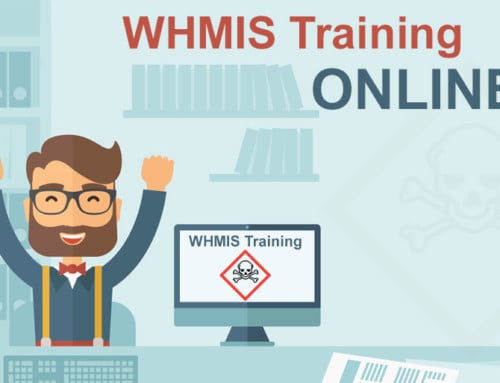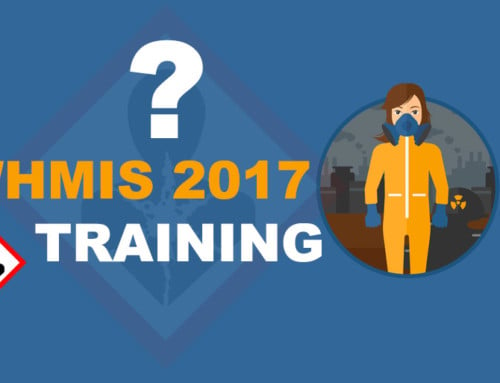WHMIS 2015 Education and Training
The GHS-aligned WHMIS 2015 came into force in February 2015, ushering in the period of transition from WHMIS 1988. Designed to improve the health and safety of workers, WHMIS 2015 ensures that employers and their employees are sufficiently informed of the hazards associated with various chemicals and substances that they work with or may come in contact with in the workplace. The most fundamental elements of WHMIS 2015 are proper labeling of chemical containers, provision of safety data sheets and worker education and training, all of which ensure that workers are better prepared to handle hazardous chemicals safely.
Since workers will most likely be handling products that follow both WHMIS 1988 and WHMIS 2015 requirements during the transition period, it’s essential that they be educated and trained on both systems until the transition period is over. In fact, employers are allowed to use both WHMIS 1988 and WHMIS 2015 classified and labeled hazardous products during the transition period as long as they have observed all the education and training requirements and have ensured that the label information on the products match the information on the safety data sheets.
Difference between WHMIS Education and Training
WHMIS 2015 education and training consists of two distinct parts, education and training. Education, commonly referred to as “General Training”, is a method of providing general information on WHMIS principles, safety data sheets, labels, hazard classes and other knowledge that is not necessarily specific to a workplace.
WHMIS Education or “General Training” topics typically include:
- WHMIS 2015 Background and Overview (purpose, rights and responsibilities, and legislation)
- Classes and Categories of Hazardous Products (previously called Controlled Products)
- Safety Data Sheets (purpose, significance and required content)
- Labels (workplace and supplier labels, and their purpose, significance and required content)
- General protective measures when working with hazardous materials
- Sources of additional WHMIS information
On the contrary, training commonly referred to as “Workplace-Specific Training” refers to providing job-specific and site-specific information to workers. Therefore, workplace-specific training deals with relevant workplace procedures for handling, using, storing and disposing hazardous products, and measures taken during emergencies, spills and other unusual situations that are specific to a workplace or site.
Workplace-Specific Training topics include:
- Procedures for the safe handling, storage, use and disposal of a hazardous chemical
- Procedures to follow when a hazardous product is in a pipe, vessel, tank car, piping system etc.
- Procedures to follow for hazardous product that may spread in air
- Emergency procedures for a particular hazardous product
- How to access safety data sheets (SDSs) at a workplace
A successful WHMIS 2015 education and training should empower workers to recognize the hazards of different products, know how to protect themselves from those hazards, know what to do during emergencies, and know where they can get further information. It should also be noted that workers’ knowledge and skills should be assessed for both education and training through quizzes, exams and practical demonstration in order to ensure their competence.
Who Needs WHMIS 2015 Education and Training?
All workers who are exposed to or are likely to be exposed to hazardous products at their workplaces should undergo WHMIS Certification Training. The education and training of workers allows them to understand existing hazards and know how to use and work safely with hazardous products.
The following categories of workers should undergo WHMIS education and training:
- Those involved in activities that may expose them to hazardous products
- Those who use, handle, store or dispose hazardous substances
- Those engaged in emergency response programs
- Those who manage or supervise workers who may be exposed to, using, handling, storing or disposing hazardous products
Responsibilities of Employers in WHMIS 2015 Education and Training
Employers in Canada are required to develop, implement and maintain effective worker WHMIS education and training programs as long as their workers work with or may be exposed to hazardous products. The education and training may be offered by employers or by qualified persons or agencies that have been chosen by the employers. And regardless of the individual or agency running the education and training programs, employers remain legally responsible for the safety and protection of their workers and are expected to ensure that their workers are thoroughly trained.
Some Canadian territories or provinces require employers to evaluate the WHMIS knowledge of their workers periodically using written tests and practical demonstrations. Likewise, as long as workplace products have WHMIS 1988 labels and material safety data sheets (MSDSs), employers must implement WHMIS education and training programs with both WHMIS 1988 and WHMIS 2015 until the transition period has ended.
General WHMIS 2015 Resources:
WHMIS 2015 Labels
WHMIS 2015 Hazard Classification
WHMIS 2015 Pictograms
WHMIS 2015 Safety Data Sheets
WHMIS 2015 Education & Training






